Turn off the power:
Make sure to switch off the power to your air conditioning unit before starting any maintenance work. This helps prevent accidents and ensures your safety.
- Electrical safety: Air conditioning systems operate on high voltage electricity, which can be dangerous if not handled properly. By turning off the power, you eliminate the risk of electrical shocks or other accidents while working on the unit.
- Personal protection: When performing maintenance tasks such as cleaning or inspecting components, it’s best to avoid any potential contact with live electrical parts. Switching off the power ensures your safety and protects you from harm.
- Prevent damage: Working on an AC unit that is still powered on can lead to accidental damage. For example, you could accidentally touch a moving fan or get your tools caught in the unit’s mechanisms. Switching off the power minimizes the risk of causing any harm to yourself or the equipment.
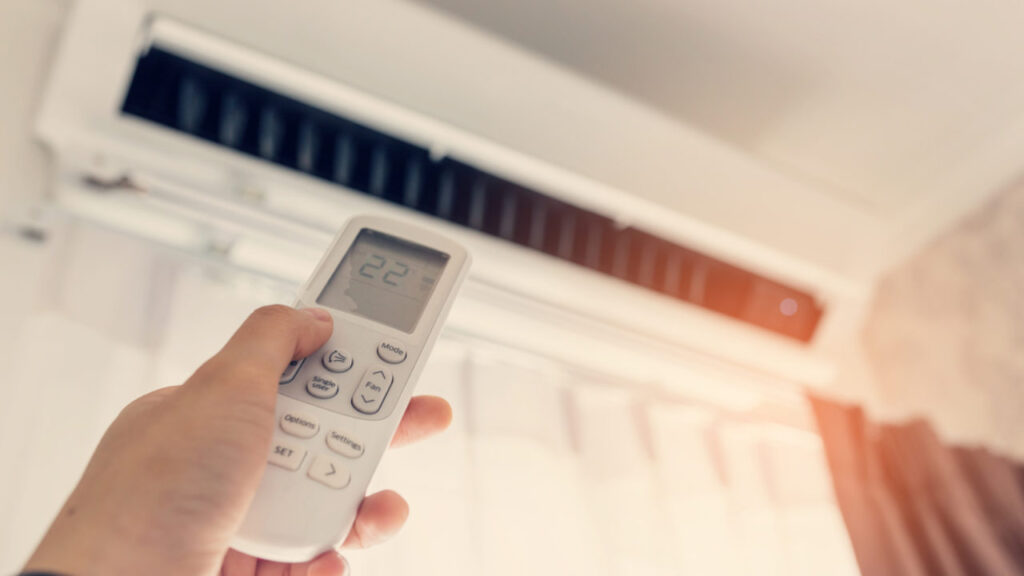
Clean or replace air filters:
Regularly clean or change the air filters in your AC system. This helps maintain good airflow and prevents dust and debris from entering the system, which can make it less efficient.
- Air quality: The air filter in your air conditioning system helps remove dust, pollen, pet dander, and other particles from the air. A dirty or clogged filter can’t effectively filter the air, reducing indoor air quality and potentially causing respiratory issues.
- Energy efficiency: A clean air filter allows for better airflow through the system. When the filter is clogged, the AC unit has to work harder to pull air through, leading to decreased energy efficiency and higher energy bills.
- System performance: Restricted airflow caused by a dirty filter can strain the AC system. It may result in reduced cooling capacity, uneven cooling, or even damage to other components over time. Regularly cleaning or replacing the filter helps maintain optimal system performance.
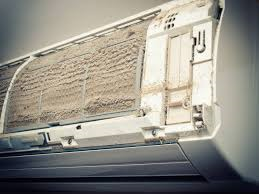
Check refrigerant levels:
Signs of low refrigerant: If your AC system is not cooling properly, you may suspect low refrigerant levels. However, low cooling performance can also be caused by other issues, such as a dirty filter or a malfunctioning component. It’s best to have a professional diagnose the problem.
Remember, refrigerant handling requires specialized training and equipment due to its environmental impact and potential health risks. It’s best to leave refrigerant-related tasks to qualified professionals to ensure proper measurements, system integrity, and environmental compliance.
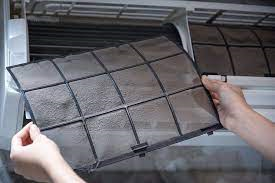
Inspect the outdoor unit:
Take a look at the outdoor unit of your air conditioner. Check for any debris, leaves, or objects that might block the airflow. Keeping the area clean around the unit ensures proper ventilation.

Clean the condenser coils:
Cleaning the condenser coils helps maintain efficient heat transfer and overall system performance. Performing this task annually or as needed can contribute to the longevity and energy efficiency of your AC system. If you’re unsure or uncomfortable with performing the cleaning yourself, it’s best to contact a professional HVAC technician for assistance.
Use a garden hose to gently spray water on the condenser coils. Start from the top and work your way down to remove dirt, dust, and other build-up. Be careful not to use excessive pressure that could bend or damage the fins. If the condenser coils are particularly dirty, you can use a commercially available coil cleaner. Follow the instructions on the product carefully, as different cleaners may have specific application methods and dwell times.
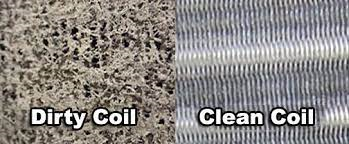
Check the blower motor:
Carefully examine the blower motor for any signs of damage, such as loose wires, worn-out belts, or excessive dirt or debris. Look for any loose or broken components that may require repair or replacement. Some blower motors have lubrication ports that require periodic lubrication. If your blower motor has these ports, refer to your AC system’s manual for instructions on the appropriate lubrication method and the type of lubricant to use. Checking and maintaining the blower motor helps ensure proper airflow and circulation within your home. If you notice any significant issues or are unsure about the condition of the blower motor, it’s recommended to contact a professional HVAC technician for a thorough inspection and necessary repairs.

Clean the evaporator coils:
Similar to the condenser coils, the evaporator coils can gather dirt and dust. Clean them regularly to ensure efficient heat transfer and better cooling.

Verify thermostat settings:
Verifying the thermostat settings ensures that your air conditioning system operates as intended, providing accurate temperature control and optimal cooling performance. If you encounter any issues or inconsistencies with the thermostat, it’s recommended to consult the thermostat manual or contact a professional HVAC technician for assistance. Look at the thermostat display to ensure it is functioning properly and showing the correct information. If the display is blank or not functioning correctly, it may indicate a problem with the thermostat or its batteries. Replace the batteries if necessary. Set the thermostat to the desired temperature for cooling. Ensure that it is set to “cool” or “AC” mode, depending on the thermostat model.
Inspect electrical connections:
Take a close look at all the electrical connections, wires, and terminals. Ensure they are securely connected and free from any damage. Loose connections can cause problems with the AC’s performance or even lead to electrical issues.
Use a voltage tester to check the voltage at the electrical connections. The voltage should be between 110 and 220 volts, depending on the type of AC unit you have.
Inspect the electrical connections for any signs of damage. This includes loose wires, corroded connections, or burnt insulation.
Here are some additional safety tips to keep in mind when checking electrical connections in your home AC:
- Always wear safety glasses and gloves when working with electrical connections.
- Be sure to turn off the power to the AC unit at the breaker box before you start working on the electrical connections.
- Do not work on electrical connections if you are not comfortable doing so.
If you are not comfortable checking the electrical connections yourself, you can always call an electrician.

Test the system:
After performing the maintenance tasks, test your air conditioning system. Monitor the airflow, temperature, and listen for any unusual sounds or vibrations. This helps ensure that everything is working properly. Monitor airflow: Stand near the vents or registers throughout your home and check if there is adequate airflow coming from them. Make sure the airflow is consistent and strong. If you notice weak airflow or uneven cooling, it may indicate a problem with the system that requires further inspection or maintenance. After the air conditioning system has been running for a while, use a thermometer to measure the temperature of the air coming from the vents. Compare it to the temperature set on the thermostat. The temperature should be significantly cooler than the room temperature, indicating that the system is cooling properly.
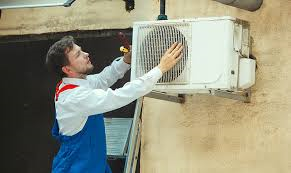
Remember, it’s always a good idea to consult a professional HVAC technician for a thorough and comprehensive maintenance service for your home air conditioning system.
